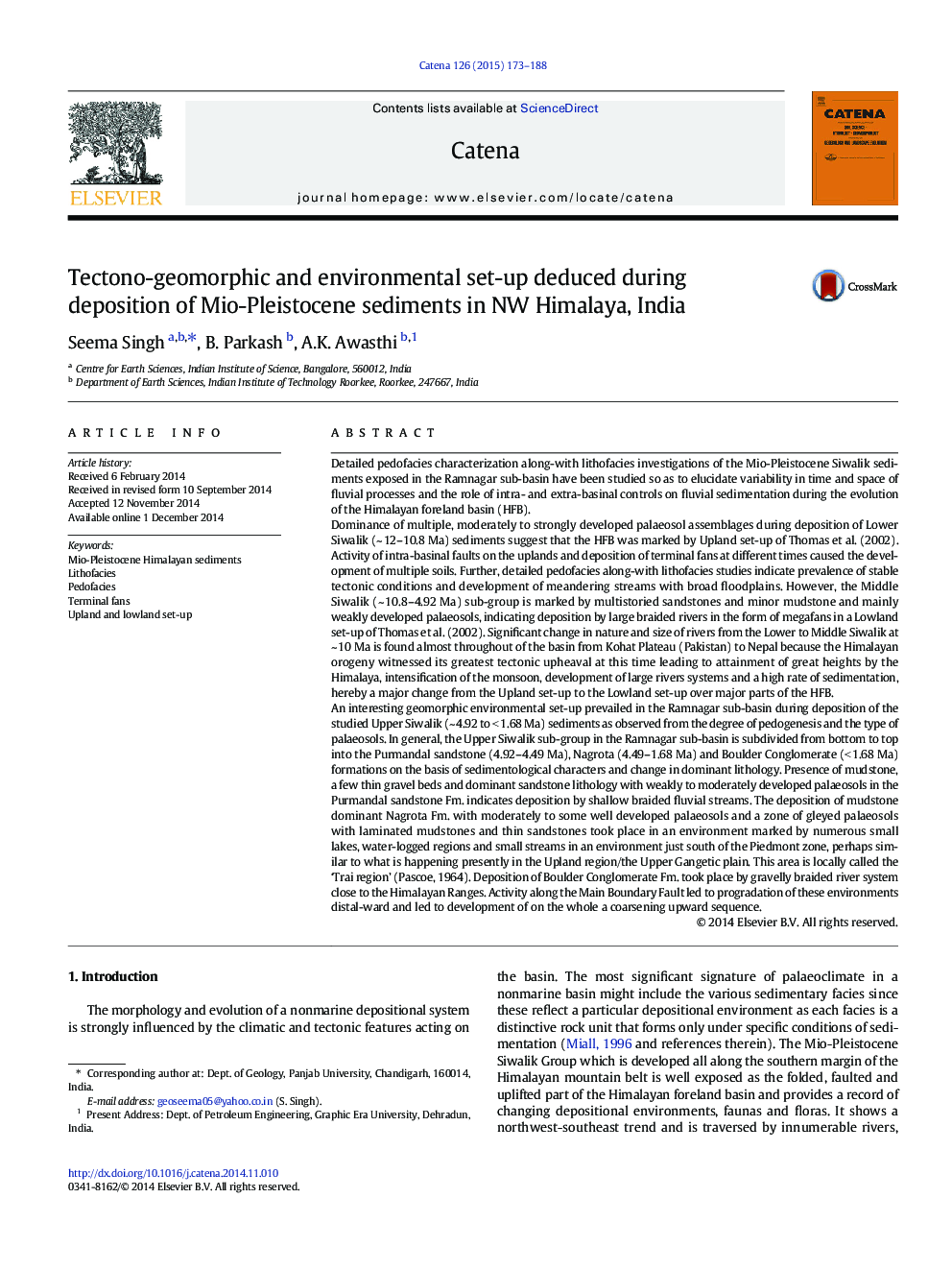| Article ID | Journal | Published Year | Pages | File Type |
|---|---|---|---|---|
| 4571388 | CATENA | 2015 | 16 Pages |
•First documented detailed pedofacies studies from Ramnagar sub-basin of NW Himalaya.•Pedofacies usefulness in understanding basin tectono-geomorphic and environment set-up.•Present work is valuable analogue for modern Indo-Gangetic foreland basin evolution.•First time documented that the geomorphic set-up during deposition of part of U.Siwalik sub-group in the NW Himalaya seems similar to the locally called “Trai” region of modern Indo-Gangetic fluvial basin.•Studied sub-basin is an important link between similar works done in Pakistan Siwalik.
Detailed pedofacies characterization along-with lithofacies investigations of the Mio-Pleistocene Siwalik sediments exposed in the Ramnagar sub-basin have been studied so as to elucidate variability in time and space of fluvial processes and the role of intra- and extra-basinal controls on fluvial sedimentation during the evolution of the Himalayan foreland basin (HFB).Dominance of multiple, moderately to strongly developed palaeosol assemblages during deposition of Lower Siwalik (~ 12–10.8 Ma) sediments suggest that the HFB was marked by Upland set-up of Thomas et al. (2002). Activity of intra-basinal faults on the uplands and deposition of terminal fans at different times caused the development of multiple soils. Further, detailed pedofacies along-with lithofacies studies indicate prevalence of stable tectonic conditions and development of meandering streams with broad floodplains. However, the Middle Siwalik (~ 10.8–4.92 Ma) sub-group is marked by multistoried sandstones and minor mudstone and mainly weakly developed palaeosols, indicating deposition by large braided rivers in the form of megafans in a Lowland set-up of Thomas et al. (2002). Significant change in nature and size of rivers from the Lower to Middle Siwalik at ~ 10 Ma is found almost throughout of the basin from Kohat Plateau (Pakistan) to Nepal because the Himalayan orogeny witnessed its greatest tectonic upheaval at this time leading to attainment of great heights by the Himalaya, intensification of the monsoon, development of large rivers systems and a high rate of sedimentation, hereby a major change from the Upland set-up to the Lowland set-up over major parts of the HFB.An interesting geomorphic environmental set-up prevailed in the Ramnagar sub-basin during deposition of the studied Upper Siwalik (~ 4.92 to < 1.68 Ma) sediments as observed from the degree of pedogenesis and the type of palaeosols. In general, the Upper Siwalik sub-group in the Ramnagar sub-basin is subdivided from bottom to top into the Purmandal sandstone (4.92–4.49 Ma), Nagrota (4.49–1.68 Ma) and Boulder Conglomerate (< 1.68 Ma) formations on the basis of sedimentological characters and change in dominant lithology. Presence of mudstone, a few thin gravel beds and dominant sandstone lithology with weakly to moderately developed palaeosols in the Purmandal sandstone Fm. indicates deposition by shallow braided fluvial streams. The deposition of mudstone dominant Nagrota Fm. with moderately to some well developed palaeosols and a zone of gleyed palaeosols with laminated mudstones and thin sandstones took place in an environment marked by numerous small lakes, water-logged regions and small streams in an environment just south of the Piedmont zone, perhaps similar to what is happening presently in the Upland region/the Upper Gangetic plain. This area is locally called the ‘Trai region’ (Pascoe, 1964). Deposition of Boulder Conglomerate Fm. took place by gravelly braided river system close to the Himalayan Ranges. Activity along the Main Boundary Fault led to progradation of these environments distal-ward and led to development of on the whole a coarsening upward sequence.
